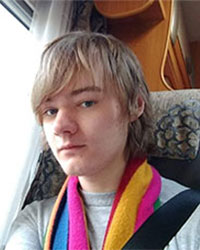Thomas Cornell
Biography
I'm a PhD student based in the Wolfson Atmospheric Chemistry Labs (WACL) at the University of York. I completed my integrated Masters in WACL in 2022 where I studied the effects of the Covid-19 lockdowns on atmospheric pollution. I found that I particularly enjoyed studying the sources and environmental impacts of airborne pollution so decided to continue studying in WACL as a PhD student.
My PhD concerns the toxic effects of secondary organic aerosols. Outside WACL, I run the University of York Esports and Gaming society, where I help organise weekly and large-scale Esports events.
Qualifications
Masters in Chemistry.
Research interests
Anthropogenic sources of pollution and their effects on human and environmental health.
Project title
Toxicity of secondary organic aerosols.
Supervisors
Funding
Leeds York NERC Panorama Doctoral Training Partnership.
Project outline
Secondary organic aerosols (SOA) are a significant contributor to fine particulate pollution (PM2.5) in the atmosphere. PM2.5 is known to be harmful to human health, and therefore emissions guidelines from the World Health Organisation (WHO) exist to limit human exposure. However, these guidelines only apply to bulk PM2.5 rather than individual components.
The goal of my project is to study and compare the toxicity of SOA from different sources to better understand the health impacts of PM2.5 components and analyse how effective policy is at targeting toxic sources. So far, this project has involved the development of a machine learning model capable of predicting toxicity of chemicals when combined with Orbitrap-LCMS.
This model has been used to compare to toxicities of biogenic and anthropogenic SOA generated in WACL. In the future, the toxicity of generated SOA will be studied at the University of Dundee using mouse models and toxicity assays. This data will be used to identify particularly toxic sources of SOA and how policy may be used to limit human exposure.

